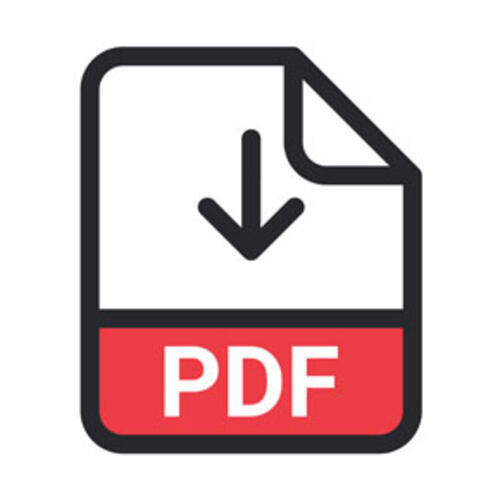
The massive challenge of decarbonizing the transportation industry has inspired renewed interest in hydrogen combustion in parallel with the development of battery electric and fuel cell vehicles. Conventional internal combustion engines that run on gasoline, diesel and natural gas can be adapted to run on hydrogen fuel, which has the potential to reduce tailpipe CO2 emissions by over 99%. Ramping up research, development and production of hydrogen vehicles can help to accelerate the transition to carbon-neutral technologies on the path to net-zero CO2 by 2050.
Southwest Research Institute (SwRI) launched the Hydrogen Internal Combustion Engine 2 (H2-ICE2) Consortium to help the automotive and transportation industries understand and address technical challenges in developing clean and efficient hydrogen vehicles. The consortium’s complete Class 8 H2-ICE demonstration vehicle offers the long-haul trucking market another zero-greenhouse gas (GHG) option.
Presentation from H2-ICE2 Kickoff
Get a PDF copy of the presentation from the kickoff meeting with detailed information about H2-ICE2 technical topics and membership details.
Hydrogen Engine & Vehicle Overview

The H2-ICE consortium used a test stand at SwRI in San Antonio to develop a hydrogen engine for a Class-8 vehicle.
Because CO2 emissions from H2-ICE vehicles were already expected to be near-zero, the primary focus of the original H2-ICE consortium was placed on achieving competitive fuel economy and reducing other regulated emissions such as NOx, with an aggressive goal to demonstrate compliance with the California Air Resources Board’s (CARB) voluntary Ultra-low NOx designation. Over a period of 18 months between 2022 and 2024, SwRI staff and experts from within the consortium membership worked together to identify the necessary components and technologies to achieve these goals. The team also built on experience from previous Low-NOx demonstration programs and SwRI expertise to specify a novel urea SCR aftertreatment architecture specific to hydrogen exhaust conditions.
CO2 & NOx Emissions
- CO2 emissions over the FTP cycle were measured at 1.5 g/hp-hr, which is a 99.7% reduction from a comparable diesel engine.
- Tailpipe NOx emissions on cold/hot composite cycles were 8 mg/hp-hr, which is five times lower than the EPA 2027 limit and still well below the CARB Ultra-low NOx standard.
- NOx emissions on the Ramped Modal Cycle (RMC) and Low Load Cycle (LLC) were also below 10 mg/hp-hr.
- All emissions testing was performed with catalysts that were aged according to the Diesel Aftertreatment Accelerated Aging (DAAAC) protocol as a hydrogen specific aging protocol has not been developed.
Design & Conversion Overview
The Cummins X15N natural gas engine was selected as the base platform for the demonstration program because it required the fewest changes for hydrogen conversion. Some new components were required, but 90% of the existing engine parts and components were carried over from the base engine.

The H2-ICE engine conversion included a bespoke intake manifold (gold), specialized injectors, bespoke engine mounts and custom turbo solution (red).
Converting the engine to run on hydrogen required new hydrogen injectors which were integrated into the intake manifold for port injection. The boosting system was upgraded due to the increased airflow requirements for lean hydrogen combustion. Active crankcase ventilation was also added to avoid building up a combustible concentration of hydrogen in valve cover or oil sump. Finally, the ignition system was adapted for hydrogen combustion, and a new engine controller was installed. All the necessary components were provided by consortium members including:
- H2 Injection – PFI injectors by Bosch & Phinia
- Boosting – SuperTurbo (mechanically-driven)
- Crankcase Ventilation – Active blower system by MAHLE
- Ignition – Capacitive Discharge system by SEM
- Controls – Woodward OH6 engine controller & software
The H2-ICE 2.0 program will continue to utilize the powertrain developed during the original consortium and leverage those resources to further explore the challenges and opportunities stemming from operating an H2-ICE powered truck in real environments.
Vehicle Integration
Vehicle integration involved much more than just packaging the new engine and replacing the diesel saddle tanks with the Forvia 350 bar compressed hydrogen tanks. A new Allison 4000 series transmission better suited to the engine output was installed and the final drive ratios of the rear axles were also adjusted for optimal vehicle performance.

The Class-8 H2-ICE demonstration vehicle runs on hydrogen, offering near-zero CO2 emissions.
Failure Mode & Effects Analysis (FMEA) methodology was performed to ensure that the vehicle could be operated safely and reliably. Based on the findings from the FMEA, hydrogen sensors were placed in strategic locations around the vehicle to detect leaks, and system start-up and shutdown procedures were developed and programmed into a new supervisory controller that interacts with each of the separate vehicle control modules.
The completed vehicle has been taken around the country to various trade shows and conferences to showcase the capabilities of H2-ICE vehicles and to educate potential fleet operators and policy makers on the findings of the H2-ICE consortium.
H2-ICE 2.0 – Exploring the challenges of H2-ICE trucking
On March 27, 2025 at 9:00 a.m. SwRI is kicking off a consortium leveraging the knowledge gained and demonstration vehicle produced by the original H2-ICE program. H2-ICE 2.0 will test the H2-ICE truck in a series of challenging real-word usage scenarios to identify the challenges and opportunities posed by H2-ICE trucking. Vehicle performance and drivability, real-world emissions testing, and vehicle safety and diagnostics will be explored by SwRI, delivering valuable data and insights to members.
Interested in joining H2-ICE 2.0?
Visit the H2-ICE Members page or contact Ryan Williams or call +1 210 522 5185 for more information.

